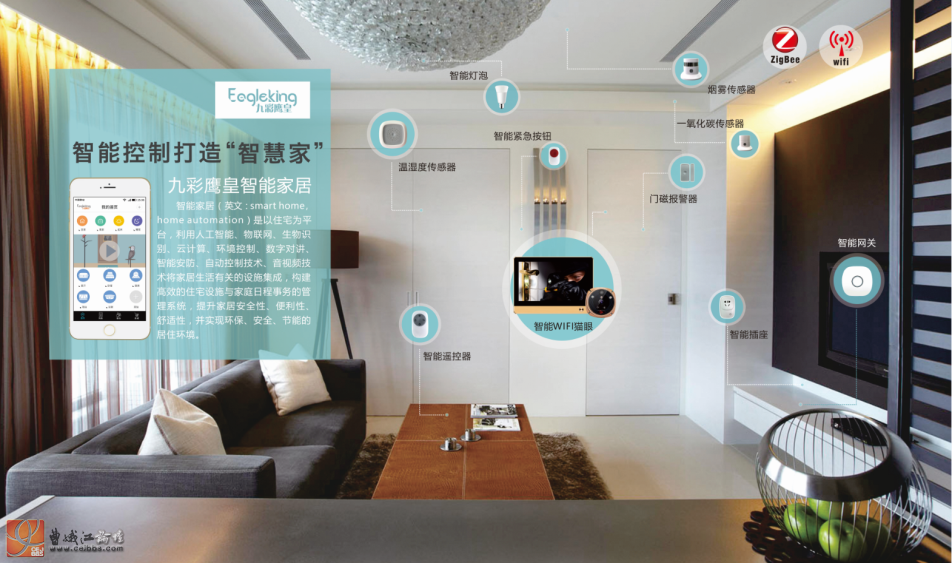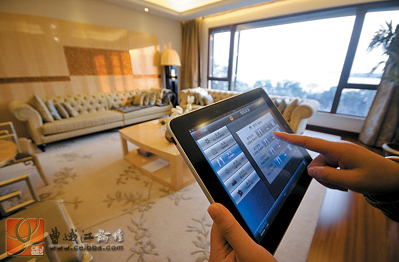OFweek smart home network news With big data, artificial intelligence and other technologies by leaps and bounds, smart home plays an increasingly important role in life. The industry often says that the smart home market is large. How big is the smart home market? According to a report from the Credit Suisse Institute, China’s middle class has a population of 109 million and an average income of more than 300,000. These middle classes are the main consumers in the smart home market, and the large population base determines the infinite potential of the smart home market. For smart home income sources, most people's first impressions are the profits generated by product sales. This part of the market is indeed very large, but after the larger market is in sales, the product has become a portal to bring a series of services to users. Enterprises derive income from them, and product sales are one-off, but this profit-making method is permanent. Once the upgrade from one-time profit to permanent profit is popularized, the smart home market will be incalculable. Three changes in the smart home market We can see that in the field of smart home, there are three changes that are happening or will happen. 1, the change of the entrance, mobile phones and tablet computers are the most common smart home entrance. It is not convenient to control smart home products through mobile phones and tablets. You often need to download APPs. There is more than one. When using the product, you need to complete steps such as taking the phone, unlocking, finding relevant interfaces, and issuing commands. A clear change will occur in the future. Every device in the home is an independent APP. For example, the refrigerator has no fruits. You no longer need to issue instructions through your mobile phone. You only need to tell the refrigerator and someone will send you fruit. 2. Changes in interaction methods: Keyboards and touch screens are currently the most widely used interactive tools, and voice interactions are gradually gaining popularity. In addition to voice interactions, visual interactions, AR interactions, and somatosensory interactions, in the future, perhaps a large number of applications will be made. Let's wait and see. 3. Changes in decision-making methods, regardless of the interaction method, require the user to actively issue instructions. With the maturity of artificial intelligence deep learning technology, smart home systems are gradually beginning to help users make decisions. For example, when the user says “I'm sleeping†with the smart assistant, the smart assistant automatically closes the window, plays light music, and turns on the aisle night light through the big data and the user’s previous lifestyle. The user does not need to do anything. Three difficulties facing the smart home market In recent years, smart homes have become more and more rich in product functions, and they have become increasingly human. In addition, from the three changes we just mentioned, we have also seen that smart home technologies are constantly improving. Why, then, is smart? Has there been no "breakout" in the home market? The author believes that there are three reasons. 1, the technology needs to be improved. The family scene is very complicated. Voice and image processing needs to be optimized. Using voice interaction as an example, HKUST and Baidu claim that the accuracy of voice recognition is 97%, but this 97% is estimated that only the CCTV host can do it. Ordinary users with ordinary Putonghua level are 70% less accurate. This is still only for speech recognition. Recognition does not mean understanding. Every word spoken by a user does not mean that they understand what the user wants to say. There is still a long way to go from speech recognition to speech understanding platform use. 2. The application scenarios are scattered and scattered. The scenes of a family are very numerous, including security, entertainment, housekeeping services, health, learning, and companionship. Every household has a wide range of home appliances, such as home appliances, robots, cameras, door locks, and more. There are too many application scenarios and products, and they are also very fragmented. It is not easy to create a variety of highly competitive smart home products to replace traditional home products and optimize usage scenarios. 3, data analysis and processing is not easy. The needs of each family are not the same. Every scene in the home is highly decentralized. Users' habits are variability. It is not easy for smart home systems to collect user information, and even if they are installed at home Many sensors have obtained data. Most of these data are garbage data. Uploading these data to the cloud continuously will occupy huge bandwidth and cloud processing resources. How to collect data and how to collect valuable data is a worthwhile thing for smart home manufacturers. In today's era, opportunities and challenges coexist. The same is true of smart homes. With the broad market prospects, it is constantly developing and improving. Keeping up with the times and the public's footsteps, smart homes will be able to better develop in accordance with the trend of the times and the masses.
Absolute rotary Encoder measure actual position by generating unique digital codes or bits (instead of pulses) that represent the encoder`s actual position. Single turn absolute encoders output codes that are repeated every full revolution and do not output data to indicate how many revolutions have been made. Multi-turn absolute encoders output a unique code for each shaft position through every rotation, up to 4096 revolutions. Unlike incremental encoders, absolute encoders will retain correct position even if power fails without homing at startup.
Absolute Encoder,Through Hollow Encoder,Absolute Encoder 13 Bit,14 Bit Optical Rotary Encoder Jilin Lander Intelligent Technology Co., Ltd , https://www.jllandertech.com
